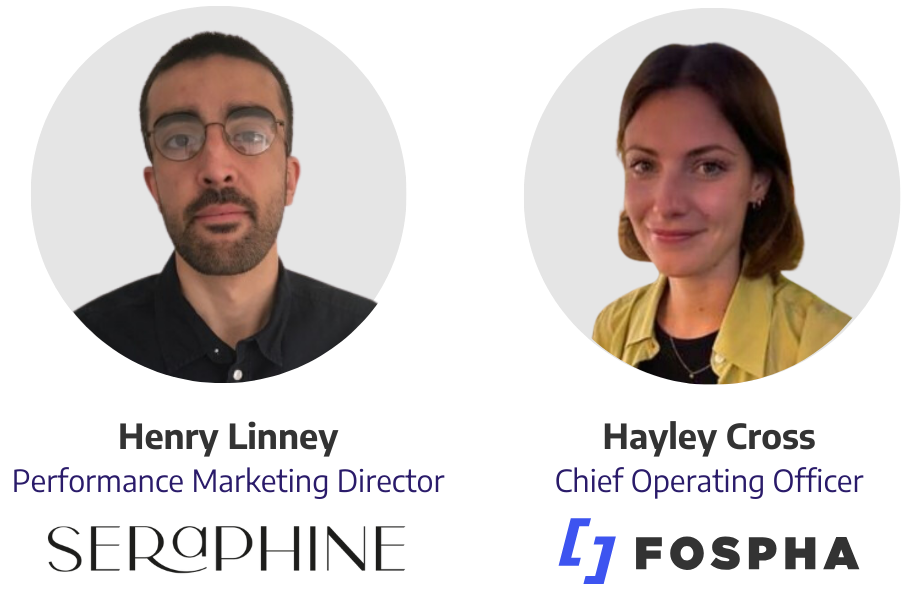Recently, Fospha’s Hayley Cross sat down with Henry Linney, Performance Marketing Director at Seraphine, a leading maternity wear brand offering stylish and functional clothing for expecting and new parents. They discussed the measurement challenges that face marketing teams, how full-funnel measurement can offer clearer insights, and strategies for maximizing success during peak periods.

Before we started working together, Seraphine was primarily using Last Click and pixel-based measurement. How has Fospha’s full-funnel measurement shifted your approach at Seraphine?
Fundamentally, we’re less wrong now. That language might sound strange, but you’re never going to be able to get it 100% right – so the goal is to be less wrong. There’s a famous quote– “Half the money I spend on advertising is wasted. The problem is I don’t know which half.”
So, for us, Fospha’s data helps us be less wrong, have a better idea of where we might be wasting money with our advertising, and enables us to rectify this. We don’t use Fospha in isolation, we still use platform data which can still be really helpful for in-channel optimizations. But having one place where we can look at channels with an apples-to-apples comparison is game-changing.
So, how does the team at Seraphine harness Fospha's full-funnel measurement to create value for the business?
It helps us make sure we’re deploying the right levels of budget across different channels – we do this with a lot more confidence now.
We used to be very heavy on Meta and Google and I don’t think businesses always appreciate how much of a risk it can be to be over reliant on a channel. If you find that your performance starts to dry up, that’s going to have a huge impact on the overall performance of the business.
So, a big goal for us was to diversify our channel mix to de-risk the business. Fospha’s data really helped us to do this by comparing efficiency across channels to find opportunities to scale channels with a smaller share of wallet, which we did with Pinterest. Once budgets are set, we can keep an eye on how that activity is performing within each market and make changes where we need to.
It's October now and we’re approaching BFCM. How does measurement play into preparing for Peak Period?
It’s even more important ahead of Peak to have data that you can trust. With Fospha we've been able to really lean into what the dashboards are telling us, move budget around, and react decisively to trends we see in the data. I think that's how you really capitalize on momentum.
Are there any common pitfalls that brands typically face when trying to catch customers during Peak?
It’s really important to be intentional about how to phase your investment over the period. Fospha did a good bit of analysis on this a while ago about three approaches you can take on this – do you ramp it up throughout all of November? Do you push throughout the Black Friday week? Or do you do the Black Friday weekend blitz?
My advice for advertisers is to lean into those times during Peak Period where your offering is more compelling than your competitors because that’s when you’re going to get a lot of cut-through. And being super clear on this investment plan ahead of time.
"Having one place where we can look at channels with an apples-to-apples comparison is game-changing."
A big thank you to Henry for sitting down with us - we can’t wait to see what Seraphine achieves during Peak Period and beyond!
Related case studies
Want more? Subscribe to our newsletter!



